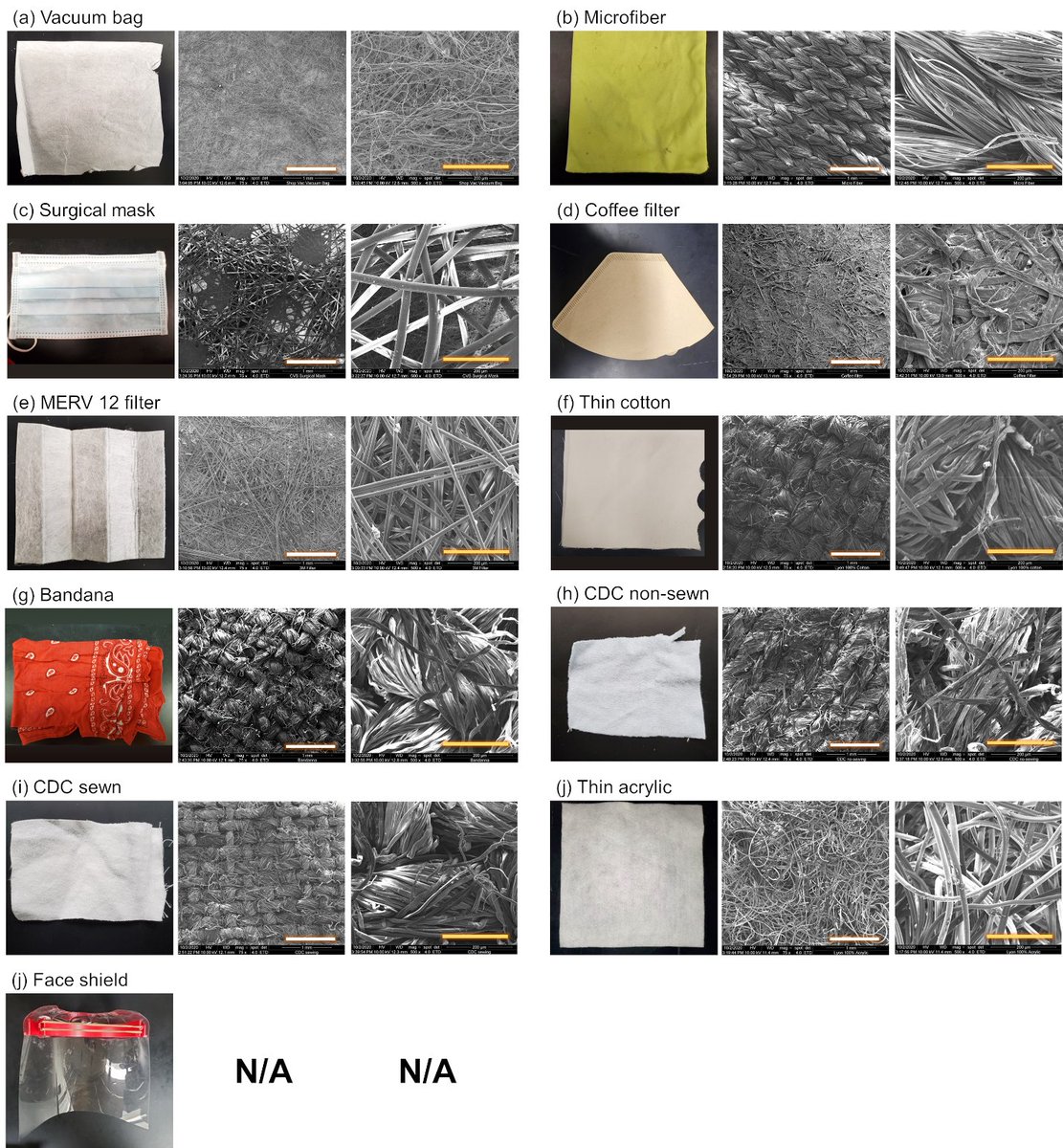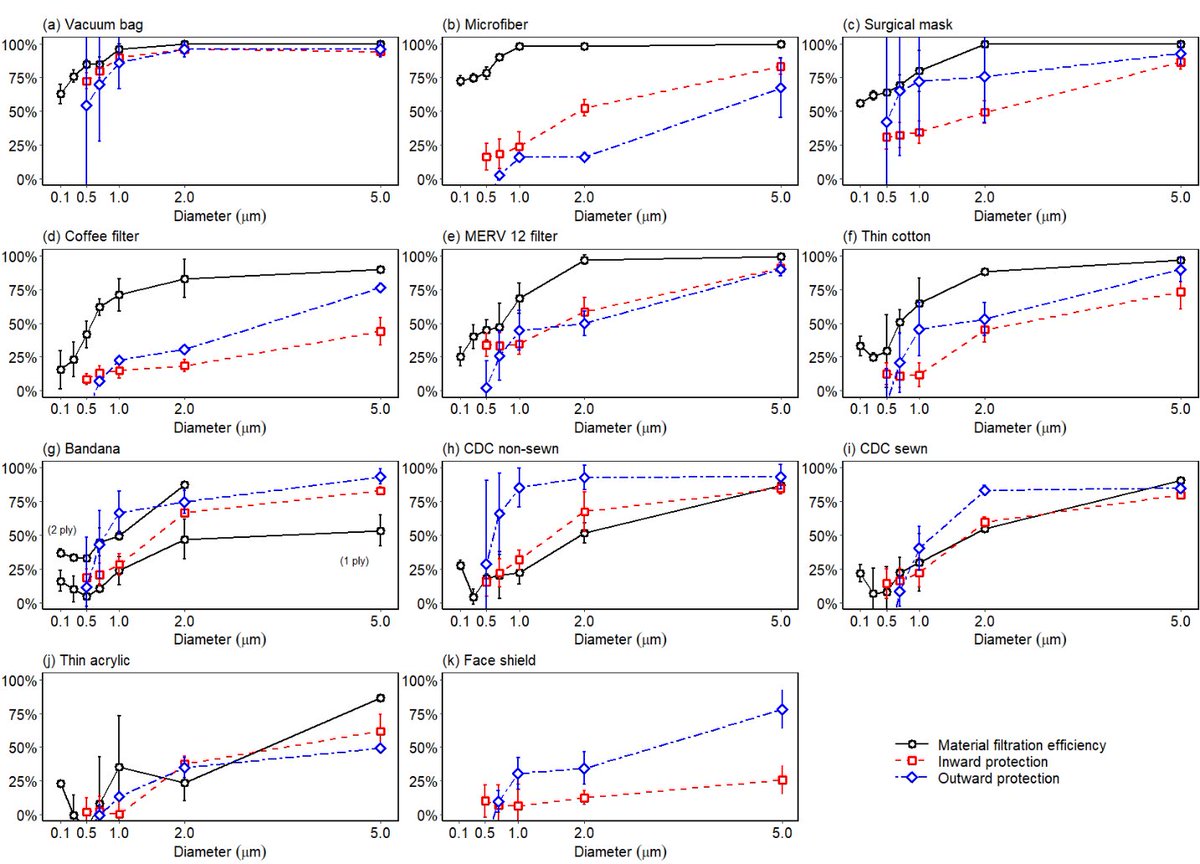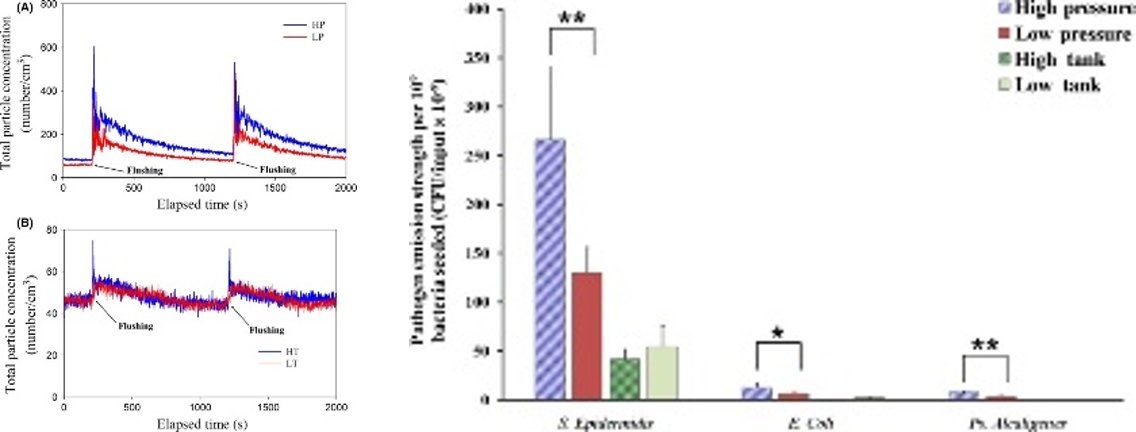
We started studying cloth masks in March. Preprint now at medrxiv.org/content/10.110… Take-home: Cloth masks are not an N95, but they work reasonably well for aerosols 1-2 microns and larger, which is the size that we think mostly mediates transmission. See thread. /1 

.@jinpan @charbeleharb & Leng tested vacuum bag, microfiber, coffee filter, MERV 12 filter, cotton, acrylic, bandana, CDC sewn & non-sewn designs, surgical mask, face shield for material filtration efficiency in a filter holder and inward and outward protection on a manikin /2 

For submicron particles, vacuum bag, microfiber, and surgical mask filtered out >50% of aerosols. Other materials were way below 50%. /3 

At 1-2 microns and larger, many materials filtered out >50% of aerosols. Inward (protect wearer) & outward (source control) protection were decent, too. Stiffer materials (microfiber, coffee filter, MERV 12) were worse because they didn’t fit well to manikin & left gaps. /4 

For better performance, we recommend 3-layer mask w/ outer layers of tightly woven fabric + inner layer of something designed to filter aerosols. Should produce overall efficiency of >70% at the most penetrating particle size and >90% for >1 micron if the mask fits well. /5
Here's a news release about our findings: vtnews.vt.edu/articles/2020/… /6
• • •
Missing some Tweet in this thread? You can try to
force a refresh





